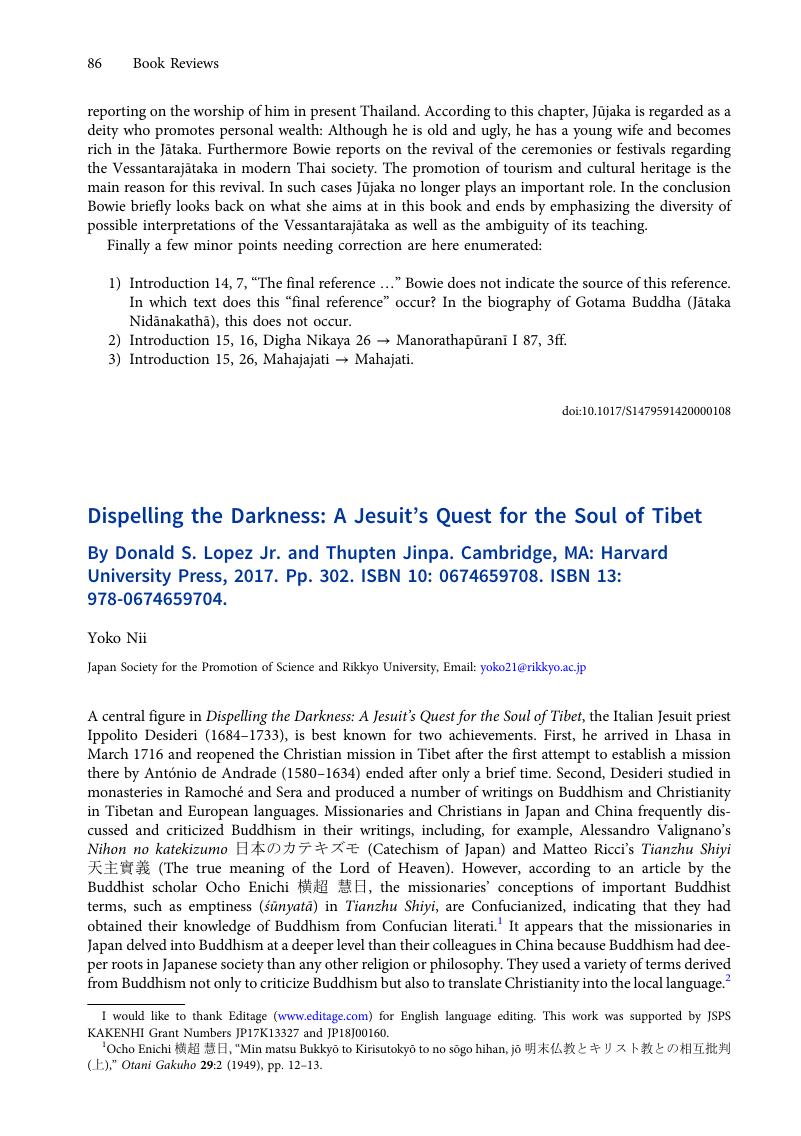No CrossRef data available.
Article contents
Dispelling the Darkness: A Jesuit's Quest for the Soul of Tibet By Donald S. Lopez Jr. and Thupten Jinpa. Cambridge, MA: Harvard University Press, 2017. Pp. 302. ISBN 10: 0674659708. ISBN 13: 978-0674659704.
Published online by Cambridge University Press: 27 April 2020
Abstract

- Type
- Book Reviews
- Information
- Copyright
- Copyright © Cambridge University Press 2020
Footnotes
I would like to thank Editage (www.editage.com) for English language editing. This work was supported by JSPS KAKENHI Grant Numbers JP17K13327 and JP18J00160.
References
1 Enichi, Ocho 横超 慧日, “Min matsu Bukkyō to Kirisutokyō to no sōgo hihan, jō 明末仏教とキリスト教との相互批判 (上),” Otani Gakuho 29:2 (1949), pp. 12–13Google Scholar.
2 For example, Valignano's use of Buddhist terminology is discussed in the following article: Yoshiki, Hazama 狭間 芳樹, “A. Valigano ni yoru Bukkyō go shiyō no kito: Nihonshi (1601) o tegakari ni A・ヴァリニャーノによる仏教語使用の企図――『日本史』(1601)を手がかりに,” Asia, Christianity & Diversity 13 (2015), pp. 35–52Google Scholar.
3 Pomplun, Trent, “Natural Reason and Buddhist Philosophy: The Tibetan Studies of Ippolito Desideri, SJ (1684–1733),” History of Religions 50:4 (2011), pp. 384–419CrossRefGoogle Scholar; Hosne, Ana Carolina, “The Jesuit Presence in Tibet against the Backdrop of the China Mission: Different Approaches to Buddhism (16th–18th centuries),” Anais de História de Além Mar 17 (2016), pp. 224–24Google Scholar.
4 Ryō 西村 玲, Nishimura, Kinsei Bukkyō ron 近世仏教論, Kyoto: Hozo kan, 2018, esp. p. 139Google Scholar.
5 Takashi, Gonoi 五野井 隆史, Nihon Kirishitan shi no kenkyū 日本キリシタン史の研究 (Tokyo: Yoshikawa Kōbunkan, 2002), pp. 108–21Google Scholar.


